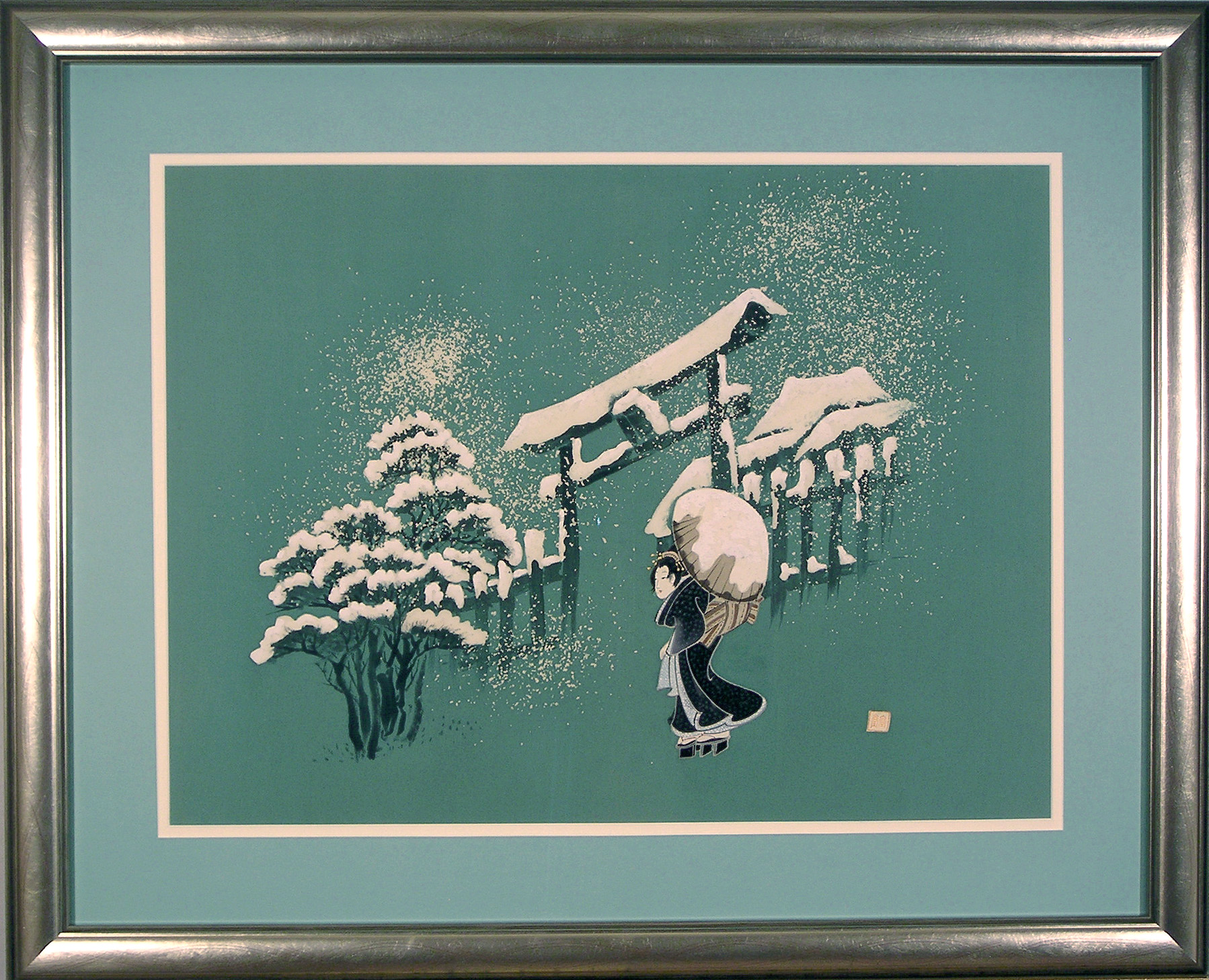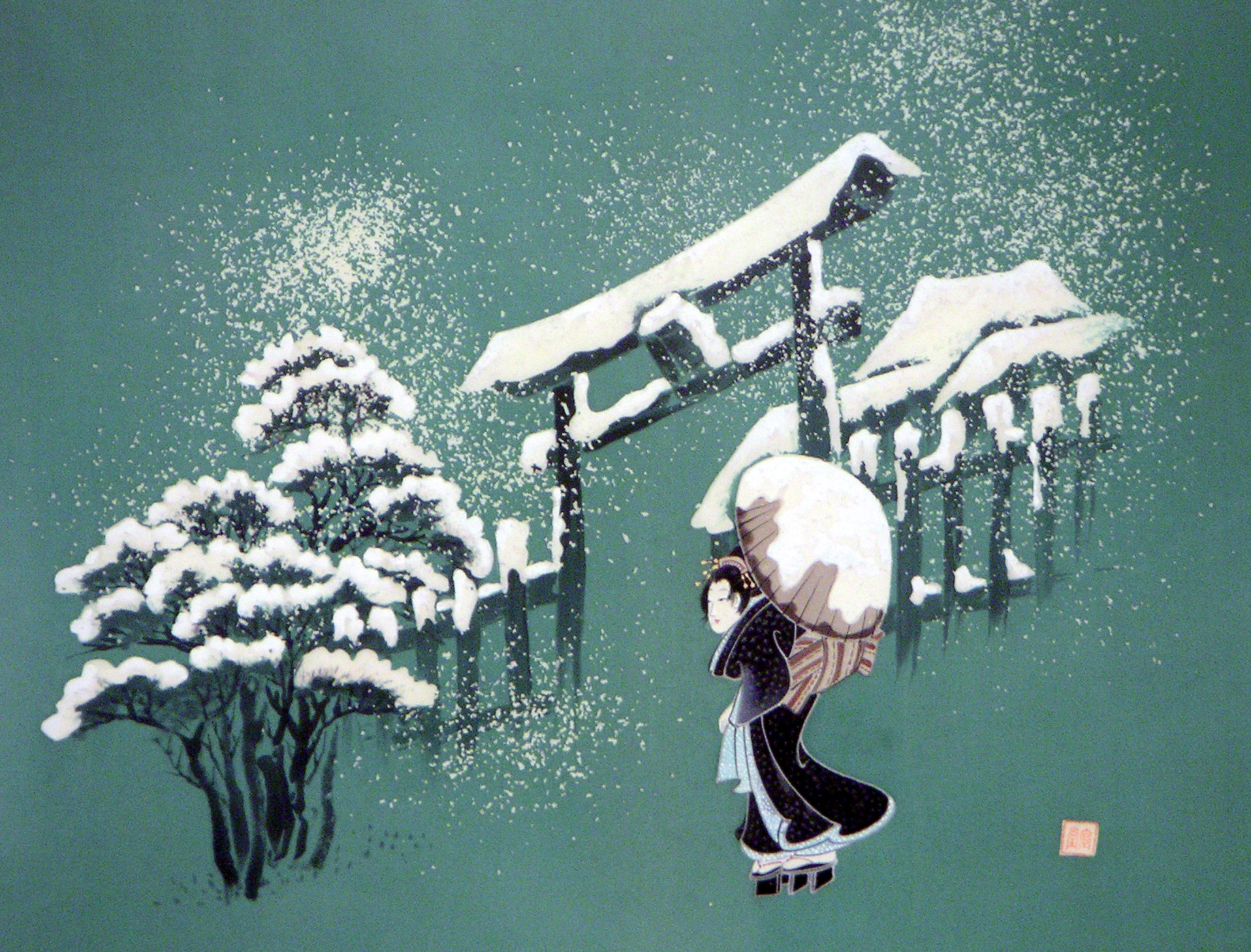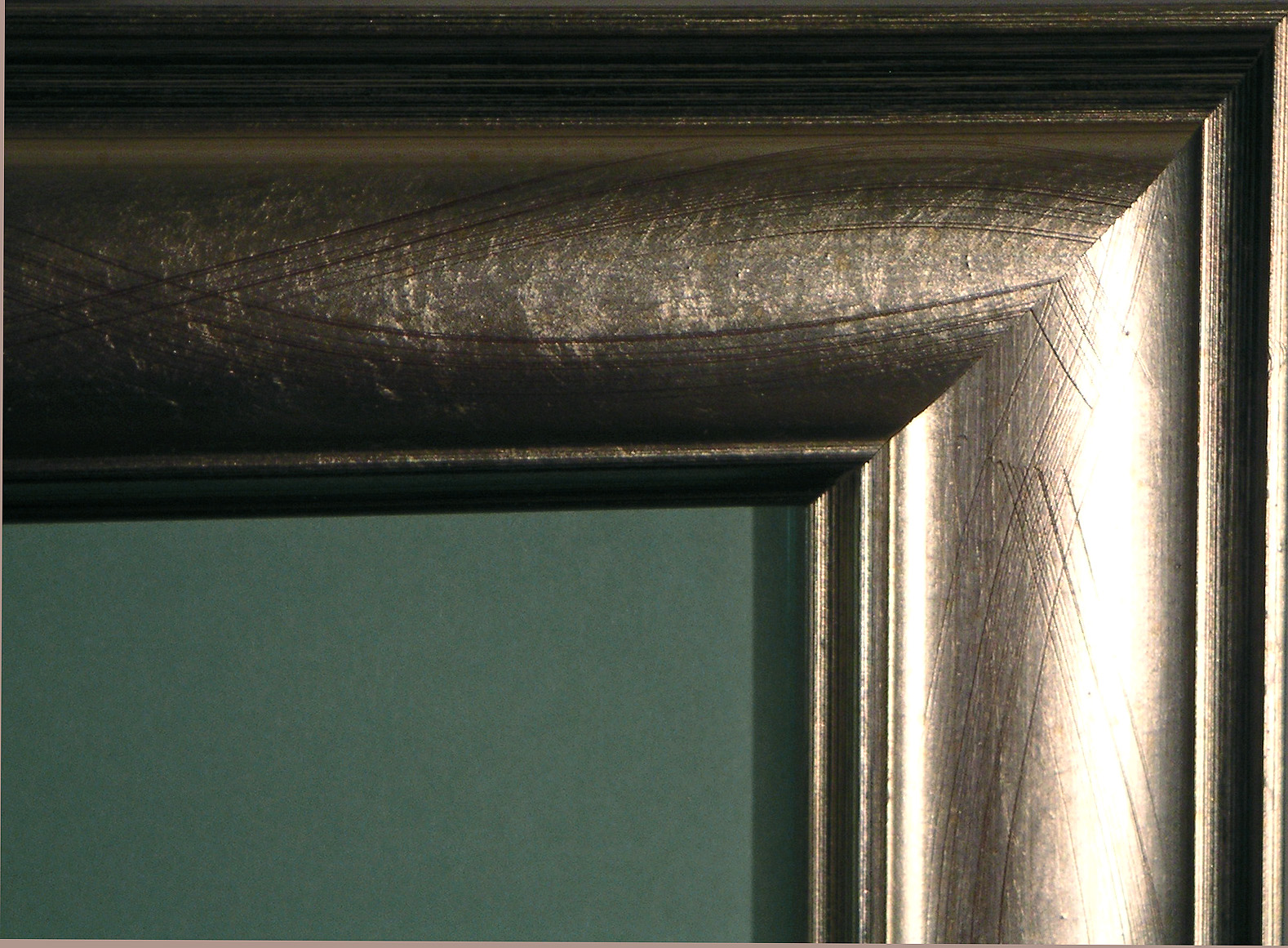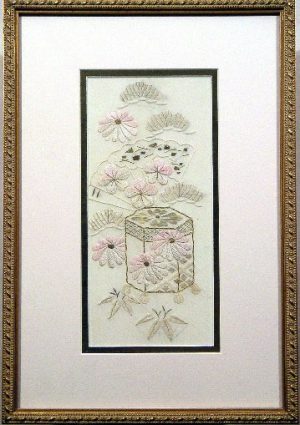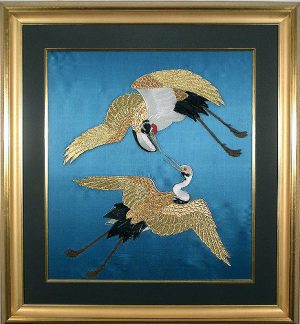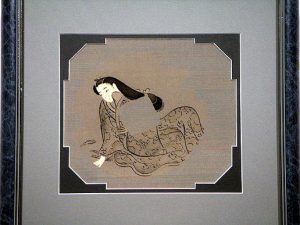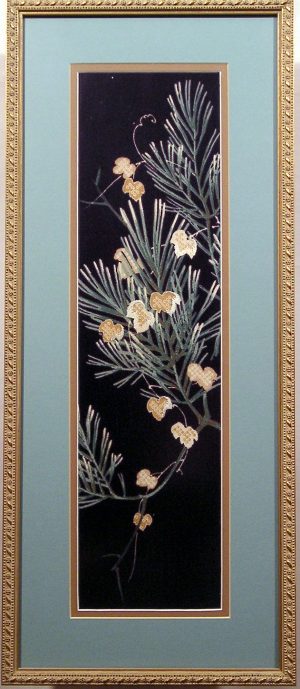Description
This marvelous hand painting on gorgeous and unusual hand woven Silk portrays a stylized Ukiyo-e snow scene. This was a fascinating art form that flourished during the Eighteenth through the Twentieth Centuries. It was bold, yet refined; while also rich in color. It was typically painted by artists originally trained in the classical schools of Japanese painting which is observable here in its composition. Ukiyo-e was an approach to painting that primarily illustrated the Pleasure Quarters of Edo (present day Tokyo) and Kyoto. The beautiful Geisha who figured predominantly in Ukioy-e Art were generally distinguishable by their heavily made up faces. This particular work of Art has a richness of imagery that portrays a well dressed courtesan, in her winter kimono and obi, whose status in society is also reflected through the graceful addition of decorative and elaborate hair combs and pins. There is a lasting appeal to this portrait of a woman out in the winter elements with her snow covered parasol, pausing just outside the Tori Gate to the Shrine which is just barely discernible in the background. One can visualize her slipping gracefully through the falling night snow, past the sacred Cryptomeria (“Sugi” or Japanese Cedar), perhaps to offer her prayers for a romantic lover.
This striking, hand painted silk panel was commissioned by its owner as a unique work of art. What makes it extraordinary is the fact that it became the interior panel of a man’s informal Haori. The Haori was required by law to be worn by Japanese men as a topcoat whenever they went out. What places the Haori in a class by itself was the added artwork appearing on the inner back panel of the Haori. The individual alone knew how the artwork represented his status in society; and, thus was able to flaunt the strict Shogunate dictates against elaborate or excessive ornamentation. The formal Haori was solid black with the exception of the wearer’s family crest (“Mon”) appearing in white on the outer shoulders. An informal Haori, however, was intended for home use; and, for this exquisite artwork to appear on an informal Haori attests to the wealth and noble standing of the man who commissioned it. The seal of the artist appears on the lower right hand portion of the painting.
The Master Weaver, who created this exceptional piece, fashioned a finely hand woven silk with an unusual puckery texture. The “Rice Paste Resist” technique of hand painting was then utilized to create this magnificent artwork. This method required that each color to be applied to the silk be done separately, while all the remainder of the art was painted out in the rice paste. Each time a new color was added, the rice paste had to be removed by soaking it out over and over again in the local river water; a time consuming, laborious, and vastly delicate process. The snow has been highlighted by the addition of a heavy layer, woodblock style, of white.
It has been placed in double, acid free mats in subtle shades of the Artwork, chosen to highlight the natural dyes of the textile. The wood frame enhances the unusual coloring of the silk. This stunning example of Japanese heirloom textile art has been mounted in conformance with the highest standards in order to ensure a damage free environment for its future protection.

